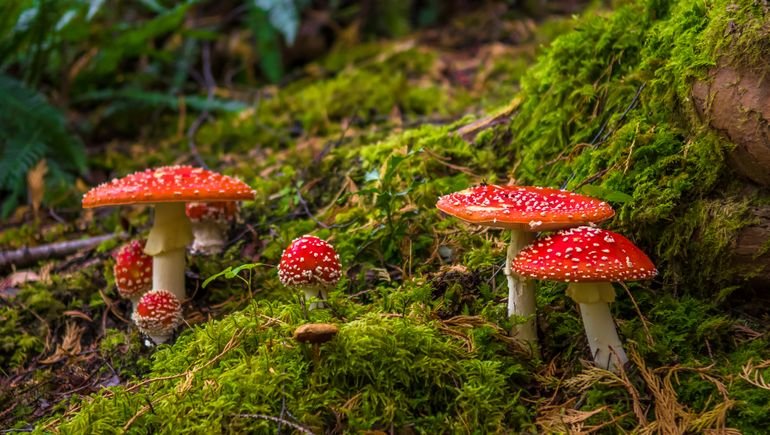Leaps in vax tech — researchers find new ways to tackle old problems like fungal infections and cancer

Vaccines play a critical role in protecting people from infectious diseases, but their development takes time. Even the fastest vaccine development in history during the COVID-19 pandemic required cutting-edge mRNA technology and billions in public and private resources to have a dose ready in the first year of the health crisis.
Researchers around the world are toiling behind the scenes in the early stages of development to create a new wave of vaccines to fight viruses that have been resistant to immunization efforts in the past, as well as new infectious threats that could be around the corner.
The fungus among us
A society-ending fungal infection is far-fetched — even though it’s the basis for “The Last of Us,” a popular HBO television show based on a video game. But these pathogens do pose a significant health risk, particularly for patients who are immunocompromised. And with more than 1.5 million deaths worldwide as a result of fungal infections each year, researchers at the University of Georgia have developed a potential vaccine candidate that has shown promise in animal studies.
No vaccine currently exists for fungal infections, and even antifungal medications are stumbling due to growing resistance, making the condition tougher to treat.
Karen Norris of UGA and her team published a study in the journal PNAS Nexus, showing that the vaccine targeting three different pathogens at once could help patients develop protective antibodies for those infections. Norris said that a phase 1 safety trial is in the works.
“This is an area that has been underdeveloped on the research front for a long time,” Norris said.
And scientists aren’t just afraid of the drug resistance that fungal infections have built up — a warmer planet could also make pathogens more likely to survive in the human body by allowing them to evolve and withstand higher temperatures.
Researchers from Duke University found that a pathogenic fungus called Cryptococcus deneoformans underwent more genetic changes in a heated environment, some of which could make for better resistance. And so while fungal diseases are on the rise, warmer temperatures could also be leading to adaptation that allows for more of these infections to take place, said Asiya Gusa of the Duke School of Medicine.
“These kinds of stress-stimulated changes may contribute to the evolution of pathogenic traits in fungi both in the environment and during infection,” Gusa said. “They may be evolving faster than we expected.”
The quest for a cancer vaccine

A cancer cell could sneak into a tumor and release a toxic compound with the right direction.
iStock via Getty Images
The biotech industry has been invested in developing cancer vaccines for years. These therapies are designed to kick-start a patient’s immune system to fight cancer — much like a traditional vaccine tells the body how to fight a virus. But there’s a hitch: Cancer cells are so good at multiplying because they are able to evade the immune system in the first place.
A few of these are already on the market, including the melanoma treatment Imlygic from Amgen and the prostate cancer vaccine Provenge from Dendreon, a company that ended up declaring bankruptcy in 2015.
Developing cancer vaccines has not proven to be easy, but the effort is now gaining steam due to the prominence of mRNA. Companies like Moderna and BioNTech of COVID vaccine fame are both working on various cancer vaccines.
And scientists at the lab bench are also finding new ways to bring the immune system into the treatment paradigm against cancer. Researchers at Brigham and Women’s Hospital are working on genetically engineering cancer cells to become death-dealing spies.
Using a unique approach, Khalid Shah and her team genetically modified live cancer cells to release a tumor-killing agent. And because these cells are like “homing pigeons,” according to a hospital release, they tend to congregate at the original source of the tumor, letting loose a veritable Trojan horse of toxicity into the cancerous spot.
“Our team has pursued a simple idea: to take cancer cells and transform them into cancer killers and vaccines,” Shah said in the release.
Perfecting the strategy
Designing a cancer vaccine to maximize the effectiveness of its action is important because, as researchers at Northwestern University are willing to admit, these therapies just don’t work well enough yet. Cancer vaccines in a conventional sense are a blend of both an antigen that targets the immune system and an adjuvant that stimulates the antigen to cause an immune response.
For Chad Mirkin and his team at Northwestern, the process needs to be more focused on the structure of the resulting vaccine to improve effectiveness, according to a release from the university.
“The work shows that vaccine structure and not just the components is a critical factor in determining vaccine efficacy,” Mirkin said.
By positioning antigens and adjuvants at the nano-level in the molecular structure of the vaccine, the immune system can react in a more pronounced way, leading to a better attack on cancer cells. Mirkin sees it as a war.
“If your immune cells are soldiers, a traditional vaccine leaves some unarmed; our vaccine arms them all with a powerful weapon with which to kill cancer,” Mirkin said. “Which immune cell ‘soldiers’ do you want to attack your cancer cells?”
Source link
#Leaps #vax #tech #researchers #find #ways #tackle #problems #fungal #infections #cancer